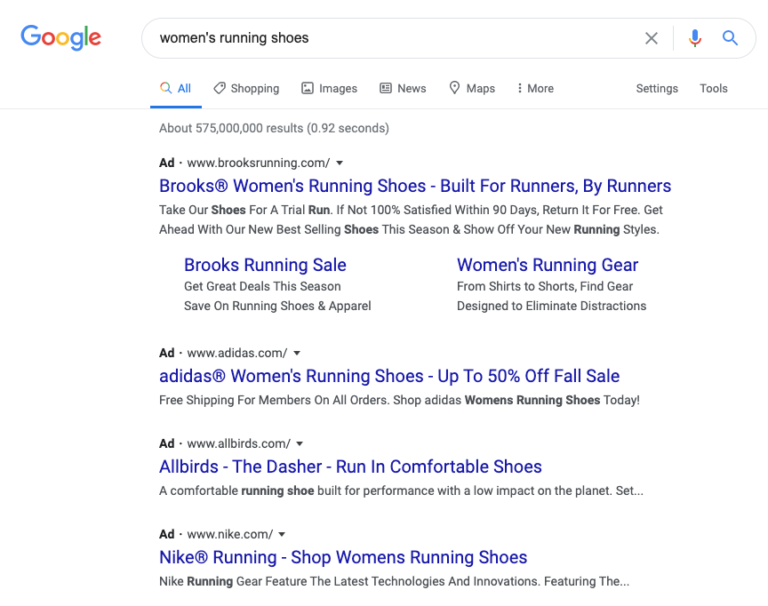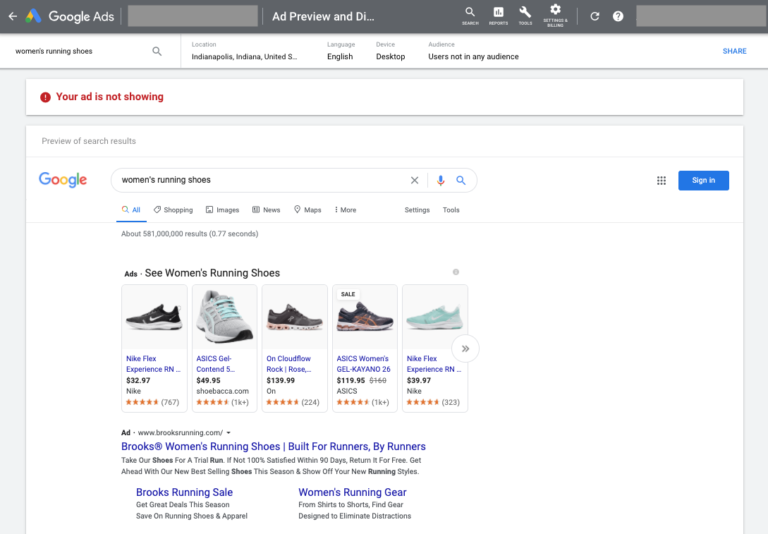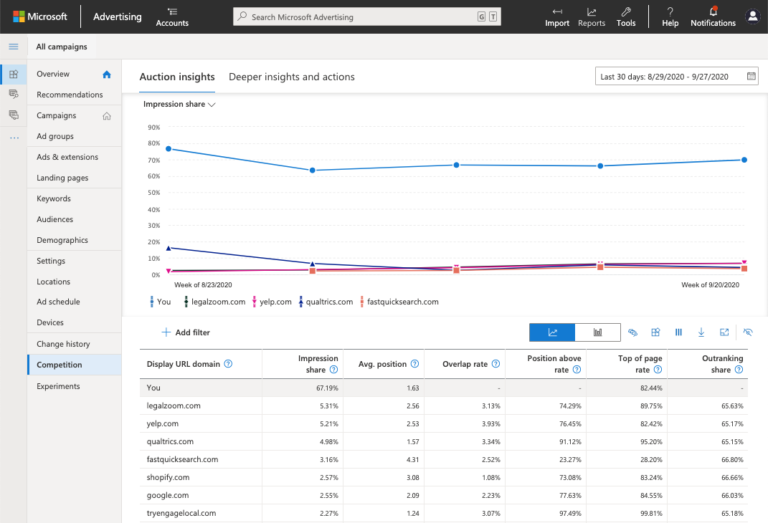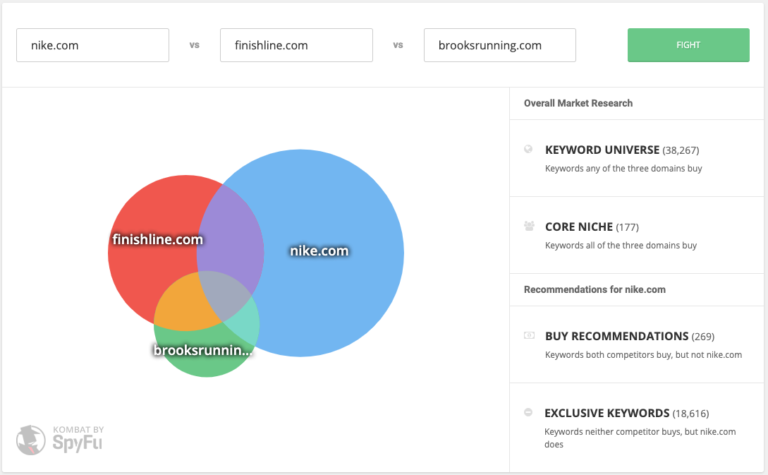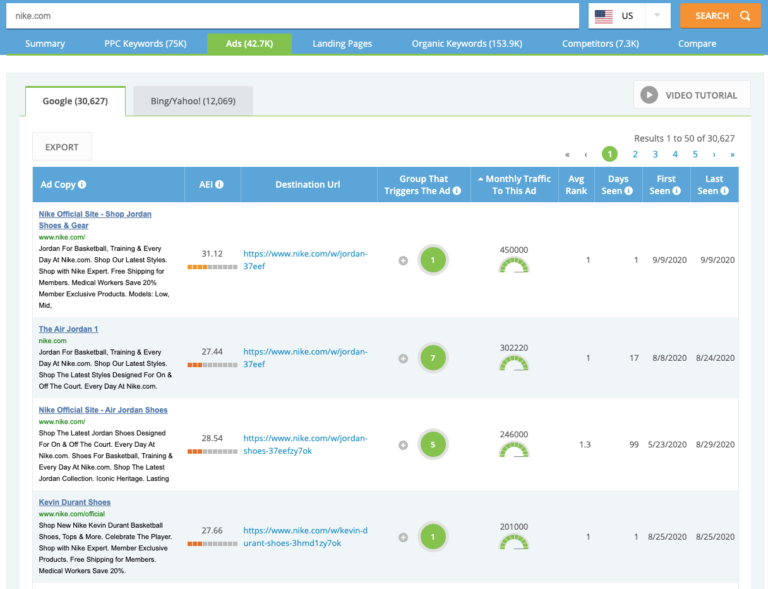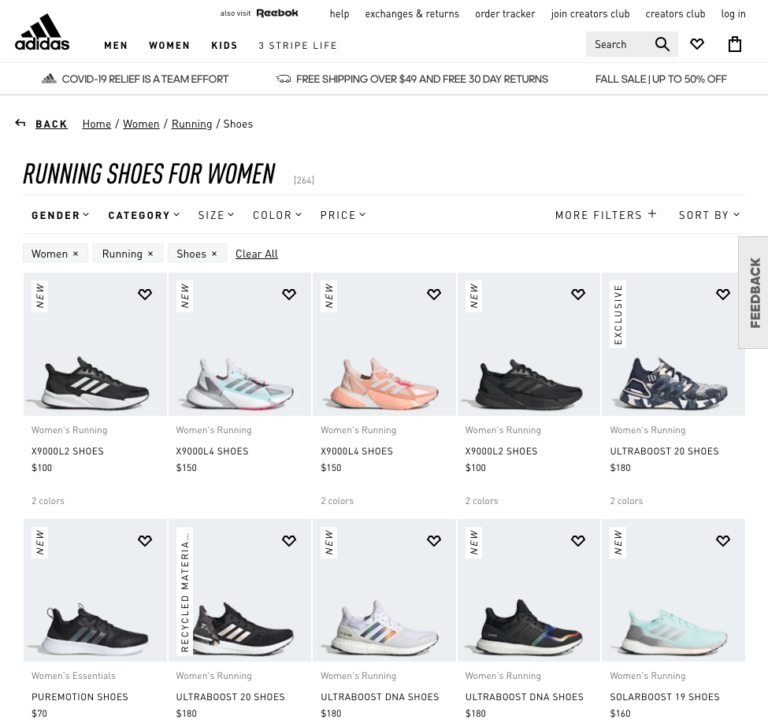Why would a company want to conduct competitor research?
There are many different reasons.
But a place where it can save immediate dollars or yield short term revenue rewards is online advertising.
We’re all using the search engines and social platforms to compete for position and gain the attention of our target audience.
But each platform brings its own challenges and sets of competitors.
By conducting competitor research on these different platforms, you can:
- Learn what your competitors are up to.
- Find out where you can compete.
- Assess where you should concede to save your ad spend.
Let’s look at a number of tools you can use to gain insights on your competitors across these platforms and discuss what potential takeaways you should be looking for.
1. Search Keywords
Probably the most common type of competitor research is around the keywords they’re targeting on search platforms.
For digital advertising, it’s likely been around the longest and is the easiest to directly understand.
Each search query is an action. You bid against competitors on the terms you want.
And having info about their keywords can directly impact your strategy.
Clear enough, right?
So where can you find this information?
Don’t worry, there are a number of options out there.
Unfortunately, none of them are without their drawbacks.
Search Engine Results Pages (SERPs)
This is certainly the most manual and painstaking option.
But if you want to know who is showing up for certain searches, just do the search.
I hope by now we all know that searching for your own ads is a bad thing.
You’ll be racking up impressions and no clicks, signaling to the engines that your own ads aren’t relevant.
But there are other drawbacks to this strategy.
Each of these searches is an entirely new auction and no two results are alike.
So searching for a keyword once might show you all, some, or none of the usual competitors over time.
Ad Preview Tools
A slightly better option than the SERPs themselves are the ad preview tools.
You’ll see a sample SERP geared toward seeing if your own ad is showing.
But you’ll also see what other ads would be showing for that same search.
With these tools, you can get all the benefits of going to the SERPs but with one less drawback – keeping the official impression count on your ads down so it won’t signal poor relevancy.
Auction Insights
Both Google and Microsoft provide Auction Insights tools to show you who has been showing alongside your ads on the SERPs.
These tools can give a number of insights around impression share, ad position, and more.
By reviewing these stats, you can see which campaigns, ad groups, and keywords you’re competing with companies for.
And see how aggressive they are over time.
Drawbacks
The biggest issue with auction insights is that they aren’t 100% accurate.
Why?
Because they don’t always divulge every competitor on the pages.
The information they do give is correct (to my knowledge) but there are certainly gaps (especially in Google).
At times, you can see no competitors showing in the report despite anecdotal evidence of seeing ads in the SERPs.
Competitor Insights Tools
These platforms are developed by third-party companies.
They typically offer both free and premium (paid) models and can help you find areas of opportunity in your search strategy.
Here are a few of the fan favorites:
- SEMrush
- SpyFu
- iSpionage
But there are plenty more available. (I’d love it if you’d share your favorites in the comments!)
These tools use their own software to scan the web and gather information about how companies are bidding on certain keywords.
Depending on which platform you use, they can provide a number of different metrics and insights on how your competitors are showing up around the web.
Drawbacks
The biggest drawback here is the outcome of the scraping process these tools use.
Sometimes the keywords they return are less than accurate.
To get a sense of how accurate the tool you’re using will be, I encourage you to run it on your own website first.
See how close the tool gets to your actual keyword list and spend.
Then use that variance to review data from competitors.
Keyword Takeaways
When trying to determine the keywords your competitors are bidding on, there are a few things to keep in mind and ask yourself:
- What new keywords should I add to my list?
- What types of keyword themes are they going after, and how can I use that to develop more for my own accounts?
- Where am I bidding that my competitors aren’t?
- Is there anything to learn from this? Is this actually a good keyword that I’m in early on, or is this really not a good fit?
- Are there any keywords they’re bidding on that are a bad fit for me that I can add as negative keywords to my own account?
Based on what you find, revisit your keyword lists and see if any adjustments need to be made.
2. Search Ad Copy
The good news here is that this is going to sound familiar.
You can visit the SERPs, use the Ad Preview Tool and some competitor tools to find the ad copy your competitors are using.
iSpionage has data that shows you which ad variants are running, as well as insights on traffic to an ad, when it was launched, and when it was most recently seen.
Pretty sweet!
Ad Copy Takeaways
Similar to keywords, there’s quite a bit that can be learned from your competitor’s ad copy.
Here are a few things I recommend you keep an eye out for:
- What is their main call to action?
- What are they highlighting in their copy?
- What emotion are they trying to elicit?
- Are they offering deals/discounts or framing themselves as a luxury?
Based on the answers to these questions, you can develop your own ad copy strategy to help you stand out on the SERPs.
If your competitors are taking the bargain route by offering sales, ask yourself if you can (and want to) beat them on price?
If so, then offer a deeper discount and highlight that you’re less expensive than they are.
If you can’t or don’t want to, frame yourself as the higher-end choice and worth the additional spend.
The features/benefits they highlight in ads also go to show where they want to compete and what they believe sets them apart.
No company writes paid promotions that highlight their worst features.
Based on what they’re promoting, how can you compete with their best features/benefits?
Are yours better so you can go at them head-on?
Subscribe for Daily Search Insights
AI, PPC, and digital marketing news distilled to fuel success. Join the other 75k marketers!
Or are yours worse and you need to highlight something else that you do well to take the attention away from that area where you’re not as strong?
It’s a little “The Art of War.”
But making sure that you’re competing where you can compete, is half the battle of winning the hearts and minds of your customers.
3. Landing Pages
Landing pages are some of my favorite places to look for competitor insights.
But I feel that many people don’t pay attention to them, which is a shame.
When you go to the SERPs, click on a few of your competitor ads and see what their landing pages look like.
Yeah, I said it.
Click on their ads.
Don’t act like you haven’t ever done it before. It’s every marketer’s dirty little not-so-secret.
Bonus: now that you’ve been to their site, you’ll get a first-hand look at how they retarget site visitors!
To illustrate the online search experience to buying a shirt from a store, your keyword is what gets you to the store and in the right department.
The ad is what catches your eye and entices you to walk over to the shirt and pick it up.
The landing page is the shirt itself.
Landing Page Takeaways
When you visit your competitor’s landing page, this is them doing their best to show off how great they are.
And just like you do with your own landing pages, it ends up being the experience you have with ad copy, but more intense.
- What does the overall layout look like?
- What are the color schemes?
- Is the page responsive to mobile or is there a whole new experience?
- What are they highlighting the most?
- Are they showing or burying their price points? This usually indicates if they’re proud of them or trying to get away with high prices.
- Are they using videos or some other form of interactive messaging?
- What is their call to action and how easy is it to complete?
- What tone of voice are they taking?
- If they have a form, how does it differ from yours?
Just because someone picks up one shirt or visits one landing page, it doesn’t mean they can’t be swayed by another after further searching.
You should craft your ad copy to stand out on the SERPs, but build your landing pages to not only try and convert users but give them all the information they need to see whether you’re the right fit for them.
Odds are they’re still going to continue shopping, but if you can make a better lasting impression than your competitors, you’ve got a leg up come purchase time.
Conclusion
Don’t shy away from knowing what your competitors are doing with their search ads strategy.
Even if there are areas they’re clearly better in, knowing that can help you take the battle elsewhere and focus your efforts where you can win.
Conduct regular reviews since we all change our strategies over time.
And be sure you’re fighting the ongoing battle, not just the one you looked at 6 months ago.
More Resources:
- How to Do PPC Keyword Research
- PPC 101: A Complete Guide to PPC Marketing Basics
- PPC Today – Letting Go of What We Were Taught
Image Credits
All screenshots taken by author, September 2020


